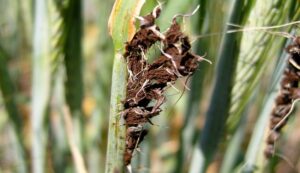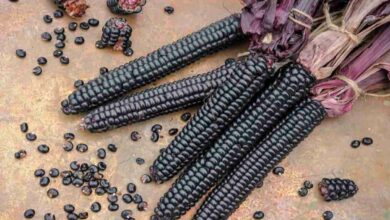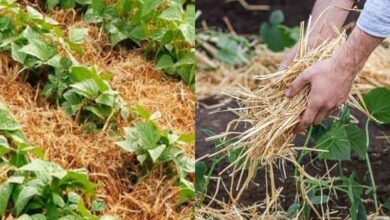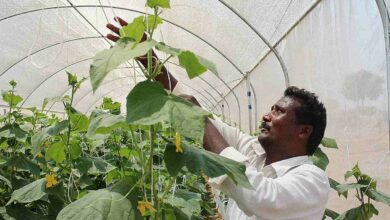These 5 diseases make the wheat crop lifeless, know the symptoms and management
Wheat Cultivation: The nation’s farmers are now occupied with getting ready to plant the crops during the Rabi season. The most common crop planted this season is wheat. Thousands of farmers around the nation grow wheat in the hopes of making big money, but illness in the grain often causes the farmer to suffer greatly. Farmers use novel techniques to shield their crops against these illnesses in such circumstances. In order to ensure the safety of the crop and boost its output, we will learn about the signs and ways to avoid these illnesses in today’s article.

5 diseases cause delay in wheat crop, know here
Brown Rust Disease
This disease mostly affects the lower, orange and brown leaves of wheat. Both the top and bottom surfaces of the leaves exhibit these symptoms. The impact of these diseases also begins to grow as crop stages rise. The country’s northeastern states, including West Bengal, Bihar, Uttar Pradesh, Punjab, and others, are the primary locations for this illness. The central Indian areas also experience its breakout to a certain degree.
Management: Avoid planting a single type of wheat over a wide region in order to safeguard crops against brown rust disease. A single variety’s susceptibility to the illness may rise if it is grown across a very big region. The illness spreads more quickly as a result. Make a 0.1 percent solution of Tebuconazole 25 EC or Propiconazole 25 EC (Tilt) and spray it to stop the illness outbreak. Do the second spraying within ten to fifteen days, depending on the illness’s onset and spread.
Black Rust Disease
The dark disease known as “black rust” affects the stems of wheat. Through the stems, the disease’s effects are transferred to the leaves. As a result, the stems weaken, and when the infection becomes worse, the wheat grains are tiny and membrane-like, which lowers the output. This disease mostly affects the crops in the mountainous southern region, while it also sometimes breaks out in central India.
Management: Avoid planting a single wheat type across a wide region in order to safeguard the wheat crop against brown rust disease. Continue to periodically check the fields and focus more on the crops that are being planted near the trees. Make a 0.1 percent solution of either tebuconazole 25 EC or propiconazole 25 EC (tilt) and spray it to lessen the illness outbreak. Do the second spraying within ten to fifteen days, depending on the illness’s onset and spread.
Yellow Rust Disease
Yellow rust disease causes yellow stripes to appear on the leaves of the wheat crop. A yellow powder-like material begins to adhere to the hands when these leaves are touched. This is this disease’s primary symptom. The wheat crop is quickly impacted by this disease, which further damages the harvests. This illness is mostly seen in northwestern plain regions like Punjab, Haryana, Uttar Pradesh, and Himachal Pradesh, as well as northern hilly regions like Jammu and Kashmir.
Management: Avoid growing wheat in vast areas and use types that are resistant to yellow rust disease. And continue to periodically check the fields. Because this disease may be more common in locations where wheat crops are cultivated near trees, pay close attention to such areas. Additionally, be careful to use a 0.1 percent solution of Tebuconazole 25 EC or Propiconazole 25 EC (Tilt) to contain the yellow rust disease epidemic.
Termite
The wheat crop is where termites are most prevalent. They establish colonies inside the crop to dwell there. They are petite, wingless, and have a yellow or white look. The most common conditions for termite infestation are sandy loam soil and dryness. By consuming them, these insects harm the plant roots and the seeds that are just beginning to germinate. This bug causes plants to seem like they have been gnawed.
Management: Farmers must plant cow dung in the field and eliminate the remnants of the previous crops in order to protect the crop against this illness. Following this, the land must be adequately seeded with 10 quintals of Neem seeds per hectare. Apply Chlorpyrifas 20 percent EC during irrigation at a rate of 2.5 liters per hectare if the illness affects a crop that has already been planted.
Aphid
These little insects have green stinging and sucking mouthparts and may be wingless or winged. In addition to secreting honeydew and sucking the juice from the leaves and ears, they can produce a black fungal infestation and significant crop loss.
Management: The land should be deeply ploughed in order to protect the crops from these diseases. Additionally, one pheromone trap per acre should be placed at different locations to monitor the pests. Spray 400 cc of Quinalphos 25% EC in 500–1000 liters of water per acre as soon as the insect population begins to negatively impact the crops. Additionally, grow maize, jowar, and millet around the fields to safeguard the crops.





